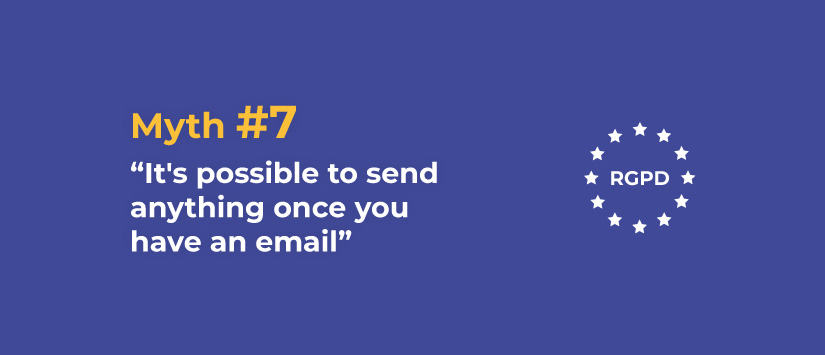Category: Email Marketing

There is only one setting in which this myth becomes reality: when you violate the GDPR. Since its existence, nothing should be sent except what the user has given consent for. It is illegal to send any type of message without first validating that you respect the rights of each person in your database. This malpractice can be prevented by collecting email addresses in compliance with the legislation. Then, yes, it will be possible to send anything because permission will have been granted.
Users share their email addresses with companies for various reasons, each associated with consent. Let's use the simplest example: from the contact form, when someone asks a question about a product or requests a quote, we have to include a checkbox informing them of how we will use their data, in this case, solely to manage the response.
Before the GDPR, companies would automatically, and without the user's awareness, add them to their newsletters and automated marketing flows to try to convert them into customers. Now, this practice is illegal: commercial information cannot be sent without consent. Therefore, we should include another checkbox to request it, and it should neither be mandatory nor pre-checked because consent must be explicit, meaning the user has to give it actively.
The purpose is key to distinguishing what can or cannot be sent. If it is different from what was stated in the form, it must be requested. Consent must be informed, which is why it is explained in a sentence who will use that information and for what purpose, so they can decide whether to consent to providing the data or not. Of course, they have the right to change their mind, and the option to revoke consent, unsubscribe, as well as make easy and free modifications, should be provided.
The GDPR also affects other user data, such as their phone number or postal address, and it is the data controller's responsibility to ensure that permission is obtained to use those channels, for example, during the registration process on an online store.
The relationship we have with the user or, in other words, the stage they are in within the conversion funnel, guides us on how to obtain their emails and communicate with them. It is not the same when they are not yet customers and we want their data for advertising shipments, as when they already are, and we use it to inform them about their account status.
Focusing on obtaining consent for marketing promotions, the most common forms are:
The simplest consent is obtained by checking a box in the form, although it is also possible to do it in a contract or on a paper list at an event, even by phone if the question is formulated unequivocally and is recorded. And, although it is possible to rent a list for permission marketing, they should never be bought.
The first thing to send is what the person has given you their email address for, such as the lead magnet or the discount. Once the promise is fulfilled, there are various types of shipments:
The mistake is in sending everything without the consent of the recipients, but afterward, it is perfectly legal to carry out all kinds of campaigns.
Download the eBook "Email Marketing Myths" to learn about other myths you should stop believing in.
Do not miss anything from our blog and join our Telegram https://t.me/acrelianews
Haven't you tried Acrelia News yet?
If you like this post, you will like much more our email marketing tool: professional, easy to use.